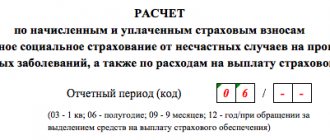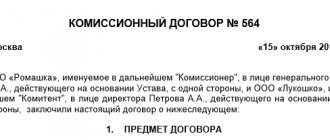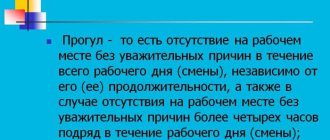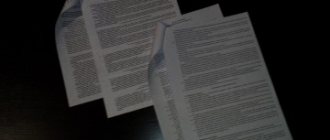About processing bank orders
Bank orders are prepared by organizations issuing funds for loans, in accordance with standard legal requirements. It is acceptable to draw up a document in both paper and electronic form. When using written forms, special attention is paid to the appropriate fields.
Bank orders have a third appendix that details how these documents must be completed. There are not many recommendations given to users; most of the advice is easy to remember. A bank order and a payment order are similar in many ways, but they also have differences.
If filling out is carried out electronically, then A4 format is usually used, no more. Documents are converted to multi-page form if the information does not fit on one page in standard forms.
The organization itself can decide how the internal content is numbered. The same applies to signing.
Management can resolve any issues related to specific details in the documents. The paperwork, quantity and purpose depend on the needs of a particular enterprise at a given time. Signing must only be carried out by persons authorized to do so. That is, there must be a right of the first or second degree.
Responsibility for determining the authenticity of the order also lies with the management of the organization. Each branch can develop its own settings and requirements according to which the authenticity of the document and all the information presented in it is confirmed. The branch management is also responsible for the integrity and correctness of all content. It develops a separate sample for filling out a bank order.
Order for receipt of funds
It is drawn up using papers that differ from the incoming order. It should be noted that payment orders for the receipt of money and instructions are used with almost the same frequency.
As in the previous case, when creating a document, select the appropriate type of operation:
- Payment from the buyer.
- Calculation of credit/loan.
- Refund by supplier.
- Other settlements with counterparties.
- Proceeds from sales of bank loans and payment cards.
- Collection of funds.
- Purchasing foreign currency.
- Proceeds from the sale of foreign currency.
- Other non-cash transfers.
What to consider
Bank orders are documents widely used in situations of interaction between client accounts and those belonging to management.
Bank order
Any changes or results after operations must be reflected in the contents of the document. Appropriate adjustments are made to it specifically for this purpose. Why do you use additional fields or lines?
There is another important point in the content of bank orders. An extract from your personal account is a mandatory application; you cannot do without it. This document describes all operations in detail. It often happens that there are not enough funds in client accounts for an instant transfer. Then the bank order is transferred to the group of documents left without payment. Or to a group of overdue accounts. To continue the operation, a payment order is issued. And the operation itself is described using the corresponding field.
The management of the organization must necessarily approve any actions related to the document. The main thing is to rely on the standards adopted by the Bank of the Russian Federation. And the current version of the Legislation of our country.
Such measures are relevant for account holders who experience any problems. Or when there are not enough funds to immediately pay for the operation.
Retention period for cash receipt order
The time period allocated for keeping PKO in storage, as for any other primary accounting documentation and payment documents, is based on the order of the Ministry of Culture of the Russian Federation and is 5 years after the end of the reporting year. Moreover, the organization must take responsibility for the proper retention of records during this period.
Important! When an organization is liquidated, the retention period remains unchanged. Even if the actual legal entity no longer exists, papers cannot be destroyed. To do this, the liquidation commission transfers the documents to the state archive, where they will be stored until a certain period.
This is what a PKO sample should look like
A cash receipt order is an important document when a company receives money. It must be filled out without errors or blots. Today, the Internet provides many opportunities that allow you to apply for a PCO online through special services.
About the difference between an order and a payment order
Both documents have found wide application in the work processes of banking systems. But there are also distinctive features that make it possible to clearly separate one instrument from another. First, let’s understand the essence of the term “payment order” itself.
Payment order
The difference lies in the fact that a payment order is considered to be a certain instrument with which a partial transfer of funds can be made based on a receipt or invoice or other similar basis. Marks and signatures are placed on the document accordingly. The signature is provided by the employees who are responsible for conducting transactions. The order allows you to record changes in case of partial payment. Why do they put the appropriate mark on the document?
The main thing is that the specialist responsible for these actions has sufficient qualifications.
The turnover of the receipt contains data on the payment transferred in parts. The following information should be displayed:
- Number in order.
- The amount of the payment made.
- Information regarding the order itself.
- The personal signature of a bank employee additionally certifies what was stated earlier.
- Each existing order requires the creation of at least one additional copy.
Storage may be carried out in specific branches. This is relevant in case of loss of the main document, so that the information is still preserved. Copies are easy to use if necessary to issue statements.
What is a payment order?
A payment order as a document used by a financial institution for the purpose of partial execution of a transfer under any receipt, invoice or other obligation. It must be filled out in the prescribed form. The bank's marks are placed on the payment order, as well as the signatures of its employees responsible for transactions.
The fact of partial payment of a receipt using an order is recorded by placing a special mark on it. In addition, the bank employee indicates on the back of the receipt information about the partial payment - such as a serial number, information about the order, amount, and also certifies the information with a signature.
Copies of the order must be kept by the bank. They can be used as attachments to information statements of clients' bank accounts.
Scope of application, differences from memorial orders
It has been said more than once that account transactions are the main area in which this document has found the widest application. Thanks to this form of fixation, it is easy to operate several accounts at once, owned by several branches of the company. When contacting clients, they can receive not only a simple bank statement, but also an order that is attached to it.
Memorial orders are documents that help process transfers in the event of a lack of cash. This is the main difference from other documents with similar names and purposes. A relevant tool for both debit and credit.
Payment order
It is a settlement document expressing a written order from the account owner sent to a banking organization to transfer a certain amount to the recipient's account. The latter can be opened in this or another bank.
The execution of the order is carried out within the period established by law, or in another, shorter period, if this is provided for in the account service agreement or determined by customs.
Using this payment document, funds are transferred:
- For the supply of goods, provision of services, performance of work.
- To the budget of any level, extra-budgetary funds.
- For the purpose of returning/placing a loan/loan, paying interest on borrowed funds.
- For other purposes provided for in the agreement or law.
In accordance with the main agreement, the order can be used to transfer an advance (prepayment) for services, work, goods, or to perform periodic settlement transactions. The document can be presented within 10 days (calendar). The period starts counting from the next day after the date of discharge.
About the filling rules
There are some recommendations that will help you understand the procedure:
- The content of the operation is described in the line called “Base”.
- The list of attached documents appears on a separate line, with attachments.
- They separately check the presence of the signature provided by the accountant. If they do not exist, then such functions are assigned to managers. Signatures must match the templates when paper forms are used.
- There must be a correspondence between the amounts indicated in figures and in words.
- It is also important that all supporting documents listed in the list are present.
- Cash dispensing is the responsibility of the cashier. Money is transferred only to the direct recipient. Usually the buyers themselves are identified by personal documents such as a passport.
- The recipient must also put a personal signature if all the information is true.
- If an enterprise or banking organization does not have divisions, then simply put a minus or a dash.
- Amounts are most often written in rubles, using commas.
How to fill out bank receipts in the BusinessPak program - on video:
Drawing conclusions The recommendations listed above should be enough to cope with most of the controversial issues that arise when working with such documents. The Bank of Russia constantly issues instructions on this matter, where it is written about the forms of documents that it is advisable to use in a given situation. Such documents have become almost identical for all business entities. An exception is made only for individual entrepreneurs, and only if they comply with a number of conditions.
When is a cash receipt order used?
Since the PKO is a primary accounting document, it must be drawn up only upon the completion of a business transaction, that is, upon receipt of money at the cash desk of an enterprise, organization or individual entrepreneur. This rule is based on Article 9 of the Federal Law “On Accounting”.
Important! The PKO extract is issued immediately at the time of depositing cash material assets into the cash register of the economic entity.
For almost all individual entrepreneurs and legal entities. persons PKO is a familiar document, but not everyone knows the specifics of its use. The rule is very often ignored: money arrives at the cash desk on the day the order is issued. Otherwise, the document is considered invalid. You should also not allow situations where money arrives late, but the order has already been issued or the money has already arrived at the cash desk, but there is no document about it.
The PKO is considered invalid even if corrections and blots are found on it. In case of an error, you must write out a new form rather than edit the old one. PKO without a receipt is also used, available only to those entrepreneurs who are allowed to work without cash register equipment. In this case, the order must still be supplemented, but with another special strict reporting form that is used by an individual entrepreneur.
PKO is used when returning money to the cash desk in the following cases:
- Capitalization of revenue received at the end of a work shift for the sale of goods or services for cash, when the client is given a check from a cash register or a strict reporting form. It is worth noting that at the end of the shift, only one cash receipt order is drawn up for all transactions and amounts;
- Refund of money that is accountable but has not been used;
- Receiving funds from current accounts;
- Return of money that was borrowed;
- Cash contributed to the authorized capital.
You can create cash documentation in 1C









